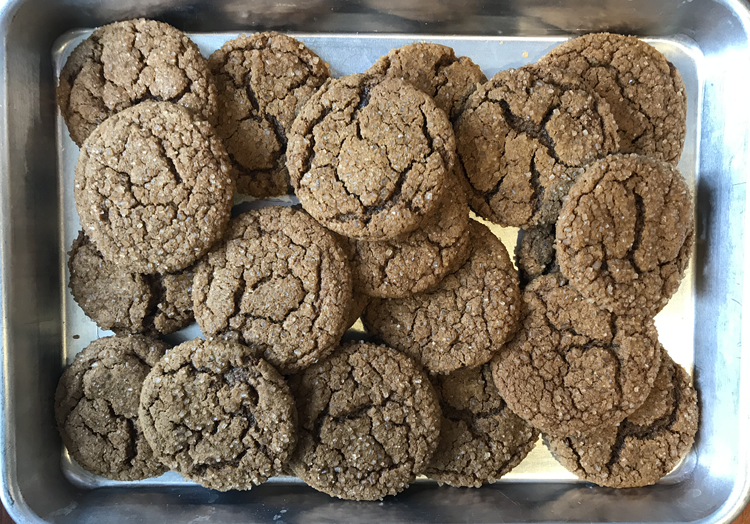The surprising history of gingerbread
December 24, 2023 by DarcieSince food news has been thin this week, I am skipping the usual antipasto and instead featuring a holiday classic: gingerbread, a hallmark of the holiday season. While gingerbread in cookie or cake form traces its ancestry back hundreds of years, decorated gingerbread houses are much more modern, according to a deep dive into the history of gingerbread by Anne Ewbank of Gastro Obscura. One of the earliest recipes for gingerbread doesn’t even include ginger!

Gingerbread has taken many forms through the ages. Dutch pepernoten are one interesting twist on the spiced bread/cookie/cake variations that make up the multifaceted definition of gingerbread. Diminutive in size, pepernoten are “crunchy, nut-shaped, and nut-colored…flavored with not only ginger but also white pepper, cinnamon, cloves, coriander, and aniseed,” says Ewbank. Other examples of the genre include German printen and a northern England staple called parkin.
One of the reasons gingerbread is associated with the holidays is that the spices used to flavor it were historically quite expensive so they were reserved for special occasions like feasts and banquets. I am grateful to be living in a time when most spices are not a rare treat to be savored only by the very wealthy – my spice drawer likely has more variety than a medieval king’s kitchen would have.
My favorite expression of the gingerbread genre is a thick and chewy molasses cookie from my childhood that features ginger, cinnamon, and clove. The recipe is from one of my hometown church’s fundraising cookbooks and was contributed by the only attorney in our small town, who was known as a gourmand. He called them “English Ginger Cookies”, although how English they are is up for debate. Since the EYB Library doesn’t have this variation on a chewy ginger cookie, I’ll include the recipe below just as he wrote it, although I play around with the spices (I use less cloves, more ginger, and sometimes add allspice and black pepper). Also, I substitute butter for the shortening although the cookies are chewier and more deeply colored with shortening.
English Ginger Cookies by Richard Herr
Ingredients:
- 3/4 cup vegetable shortening
- 4 tablespoons molasses
- 1 egg
- 1/2 cup sugar
- 1/2 cup brown sugar
- 1/4 teaspoon salt
- 2 teaspoons baking soda
- 2 cups all-purpose flour (I’d guess 5 oz. per cup)
- 1 teaspoon ground cinnamon
- 1 teaspoon ground ginger
- 1 teaspoon ground cloves
Cream together shortening, molasses, sugars & egg. Sift together flour, soda, salt & spices. Add dry ingredients gradually to creamed mixture. Shape into 1 inch balls and roll in sugar. Put on cookie sheet. Bake at 325 until cracked on top (about 6 to 8 minutes). Cookies will still be mounded in the center; they will flatten as they cool. 2
Categories
- All Posts (6940)
- Antipasto (2135)
- Author Articles (247)
- Book News (935)
- Cookbook Giveaways (983)
- Cookbook Lovers (257)
- Cooking Tips (109)
- Culinary News (299)
- Food Biz People (552)
- Food Online (791)
- Holidays & Celebrations (272)
- New Cookbooks (149)
- Recipes (1500)
- Shelf Life With Susie (231)
- What's New on EYB (133)
Archives
Latest Comments
- Atroyer7 on Danube Cookbook Review and Giveaway
- demomcook on What foods do you look forward to the most for each season?
- demomcook on Danube Cookbook Review and Giveaway
- Darcie on How cookbooks can help build resilience
- mholson3 on Danube Cookbook Review and Giveaway
- Rinshin on How cookbooks can help build resilience
- sarahawker on Danube Cookbook Review and Giveaway
- Sand9 on Danube Cookbook Review and Giveaway
- hankintoby29 on Heritage Cookies of the Mediterranean World – Cookbook Giveaway
- WBB613 on Feasts of Good Fortune Cookbook Giveaway